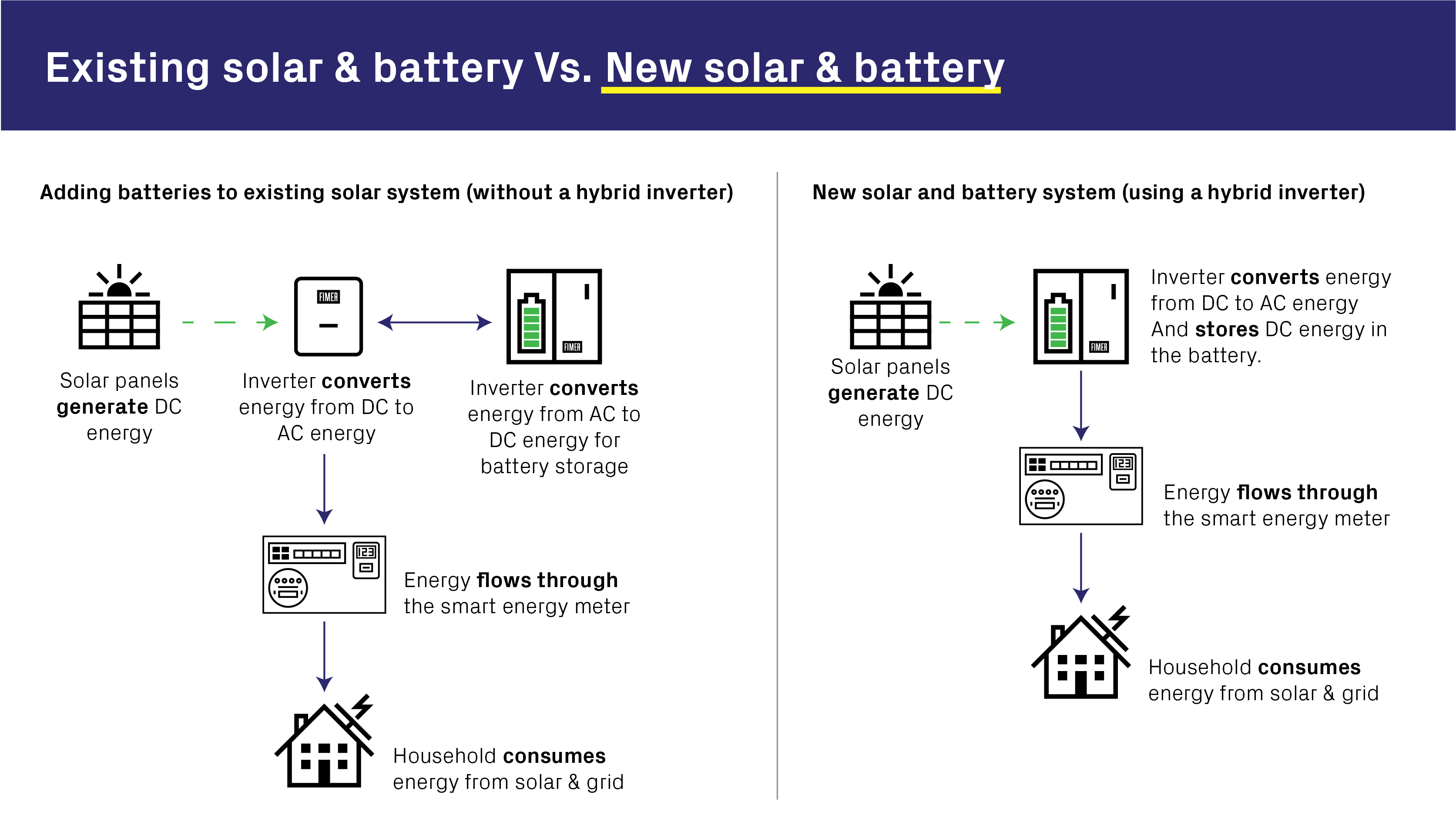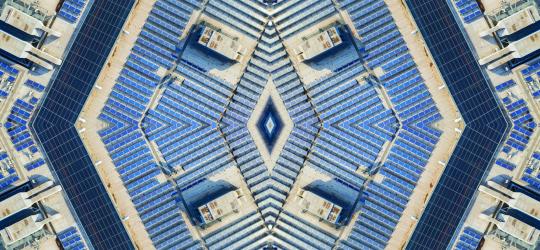| FIMER Australia | |||
|---|---|---|---|
 |
 |
 |
 |
| FIMER for home | FIMER for business | FIMER for installers | About FIMER Australia |
How do batteries work in the home?
How batteries will work in your home will depend on whether you have an existing solar system installed or not.

-
Already have solar installed?
-
If you already have solar installed and want to install a battery, you should first check to see if you have a hybrid inverter (battery-ready inverter) or not.
Like standard inverters, hybrid inverters will convert solar energy from DC to AC electricity for self-consumption or to export to the grid. Hybrid inverters will also push the DC electricity straight into the battery for storage and then, when needed, convert the energy to AC energy for self-consumption.
If you have a hybrid-inverter, you might be able to connect a compatible battery to the system. For example, FIMER's REACT 2 hybrid inverter works with our REACT 2 battery modules (whether you choose 1, 2 or 3 modules).
If your inverter isn't a hybrid inverter, you can still install batteries, but you will have to buy a battery inverter and a battery system that can connect via an AC Connection.
By connecting a separate battery inverter to an existing solar inverter, you will face energy losses when compared to a hybrid set-up, as there are multiple energy conversions taking place. The standard inverter will convert energy from the panels to AC energy for the home. Anything going to the battery for storage will have to be converted back to DC energy by the battery inverter.
-
Looking at getting a brand new solar & battery system installed?
-
Wanting to get solar and batteries installed? This section will explain what to consider when looking at components.
The hybrid inverter
When considering what hybrid inverter to use, one area to consider is how well they support emergency back-up protection if the normal grid power supply fails.
Some hybrid inverters offer no blackout protection, so even if you have a battery connected and the grid goes down, the inverter will power off, and your system won't work, and your home will have no power.
Then there is a Multiple Mode Hybrid Inverter that offers blackout protection with a slight delay (a few seconds). If there is a blackout, the inverter will kick over to standalone mode, and you will be able to power a portion of your house.
FIMER's REACT 2 solution enables you to power a portion of your home during a blackout, whether at night (using energy in the battery) or during the day (using energy generated from the panels). You will still be able to charge your batteries during the day and use the energy at night if the grid was down for longer than anticipated.
Another option is a UPS Multiple Mode Hybrid Inverter which will come on without any delays. This type of inverter is necessary if you require seamless power for medical reasons etc.

The Battery
When looking at batteries, they aren't all the same. They are made using different components, come in different sizes and have different compatibility with inverters.
Here a few considerations for looking at the battery for you:
Battery components
Batteries can be made using different materials, including:
- Lithium-ion batteries
- Lead-acid batteries
- Nickel-based batteries
- Flow batteries
Lithium-ion batteries are becoming the most common battery material used within residential batteries. They have long lifespans and don't require regular maintenance. FIMER's REACT 2 battery modules are made using Lithium-ion technology.
Lithium-ion batteries come in different battery cell shapes (pouch, prismatic and cylindrical). FIMER utilises cylindrical batteries within its REACT 2 battery modules as we have found there is less heat transferred between each battery cell, which reduces the risk of overheating and fires.
All batteries contain a charger that will take the DC energy from the hybrid or battery inverter and charge the battery cells. Chargers can be a High Voltage (HV) or Low Voltage (LV) design which will impact the efficiency, reliability, size and cost of the battery module. A High-Voltage battery charger has a simpler design with fewer components, making them more efficient (up to 99%), more reliable, and more cost-efficient than their LV counterparts. FIMER's REACT 2 contains an HV battery charger so it is more efficient than others.
Battery size
There is a mantra in the solar industry, the bigger, the better. But designing a solar and battery system is an expensive investment, with large up-front costs.
There are many batteries on the market that offer a one-size-fits-all approach. If you have high energy consumption day and night and want to ensure you can power your whole house if the grid goes down, these could be the way to go.
Another option is FIMER's REACT 2, which offers flexibility to the homeowner. The REACT 2 can start as low as 4kWh, build up to 8kWh or the max 12kWh. This offers the ability to install one module at a time or multiple modules to work within a budget or energy requirements.
Battery compatibility
Not all batteries can work with any inverter. Independent battery and inverter manufacturers do work together to provide solutions for homeowners to ensure that their inverter and battery choice will work together when they are connected.
However, commissioning can still cause problems trying to get the two independent systems to talk to each other even then. If there is a warranty or service issue, it can also be a problem trying to find out which manufacturer to talk to.
That's why FIMER's REACT 2 is a hybrid inverter and energy storage solution combined. The solution ensures a seamless installation and commissioning process. They have been designed from the start to work as a team, regardless of if you install just the inverter today and install a battery module a year later.

